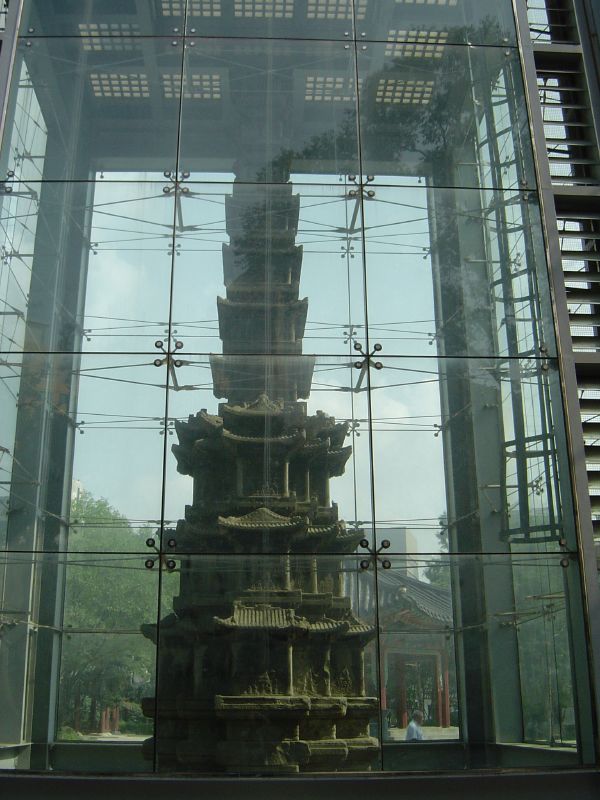- Wongaksa Pagoda
Infobox Korean name|

hangul=원각사지십층석탑|hanja=linktext|圓|覺|寺|地|十|層|石|塔|rr=Won-gaksaji Sipcheung Seoktap|mr=Won'gaksaji Sipch'ng Skt'apWongaksa Pagoda is a twelve meter high ten-story marble pagoda in
South Korea , once on the grounds of theGyeongbokgung palace but now held at Tapgol (Pagoda) Park (탑골 공원) in a protective glass case. The Korean name literally means "ten storied stone pagoda of Wongaksa Temple site."The pagoda is considered by art historians to be one of the finest examples of
Joseon dynasty pagoda art. It was originally on the grounds of the now-lostWongaksa Temple and is the only surviving stone pagoda of the Joseon period. The pagoda was designated as the second national treasure of Korea onDecember 12 ,1962 . From an inscription on the upper part of the pagoda it is known that the pagoda was built in 1467, the thirteenth year of King Sejo's reign.It is one of the few pagodas made from marble in Korea. Typical Korean pagodas are made from granite, a material abundant on the peninsula. The pedestal supporting the pagoda is three-tiered, and its shape seen from the top looks like a Chinese letter, 亞. The first three stories of the pagoda follow the shape of the base and the next seven stories are shaped in form of squares. Dragons, lions,
lotus flower s, phoenixes, Buddhas,Bodhisattva s, and theFour Heavenly Kings carved on each story of the pagoda. The pagoda, while made of stone, is carved to look like it was made from wood. The pagoda has brackets, pillars, and curved roof shapes that imitate a wooden pagoda design.The pagoda is similar to the
Gyeongcheonsa Pagoda , which was made during theGoryeo Era and is now housed at theNational Museum of Korea .ee also
*
National treasures of South Korea
*Korean Buddhism
*Culture of Korea
*Gyeongcheonsa Pagoda External links
* [http://english.cha.go.kr/ Cultural Heritage Administration]
Wikimedia Foundation. 2010.
